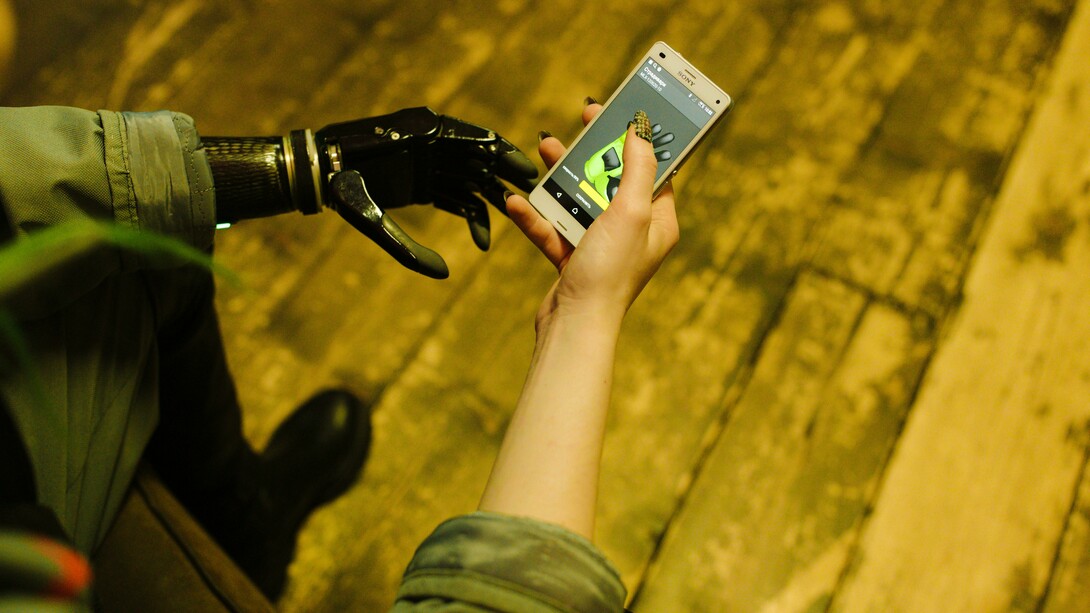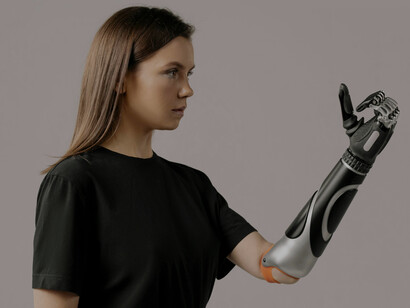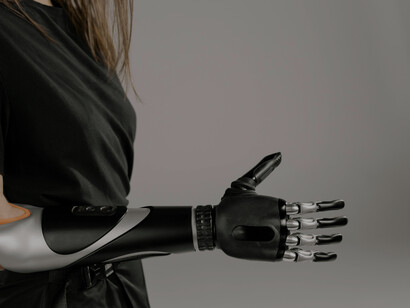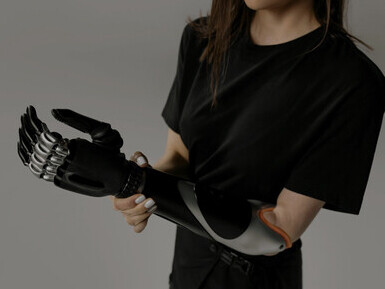When we speak of disability tech, the conversation often veers toward invention. What is the next big breakthrough? Which wearable, which app, and which prosthetic will change everything? But after 38 years of living inside a body marked by difference and navigating systems built without me in mind, I’m increasingly convinced that the question is not "what can we build next?" but rather "why haven’t we built what truly matters yet?"
This is not an essay about devices, tools, or smart assistive platforms. It is a reflection on a deeper kind of absence—one that is less visible but more impactful: the missing interiority in disability tech. The missing psychology. The missing architecture of dignity.
I write this not as a technologist alone, not as a recipient of national honors, and not as someone who has built systems, patents, and symbolic AI engines. I write this as someone who has been interrupted every single day by an infrastructure that forgot I existed, and who kept building anyway.
The mistake of reduction
Disability tech, for the most part, operates through a reductionist lens. The focus tends to be: "What function does the disabled body lack, and how do we patch it with tools?"
But the lived experience of disability is not a sequence of broken functions. It is a landscape of emotional contradiction, social friction, unspoken labor, and identity negotiations. You don’t patch that with a voice assistant or a ramp.
We don’t just need devices that help us walk, speak, or see. We need systems that reflect how it feels to walk differently, how it reshapes the psyche to need help in a world that rewards independence, and how it warps your self-perception when society responds to your body with either pity or praise, but rarely with presence.
We are not missing tech. We are missing reflection.
Where are the mirrors?
Growing up, the only reflections I had were from polished floors and people who looked away.
Even today, in 2025, most disability technology is designed to bypass discomfort, not hold it. To automate care, not evolve its texture. To reduce dependency, not reframe interdependence as human.
Where are the mirrors? Where are the systems that model dignity, that don’t just solve mobility but also mirror grief, rage, joy, fatigue, shame, desire, and quiet self-worth?
I’ve built symbolic cognition engines that track drift, not direction. That is to reflect, not respond. That measures contradiction without interrupting it. And in building them, I often wonder: why aren’t we doing the same for disability tech?
Why must we always be made legible to machines, instead of designing machines that are capable of sitting with our illegibility?
Inclusion is not a checkbox
Most institutions still treat inclusion as a feature to be toggled. A checkbox on a grant proposal. A PR badge.
But inclusion isn’t a program. It’s a posture.
You don’t include the disabled by offering them a seat at the table once it's already built. You include them by redesigning the shape of the table, the language of the invitation, and the silence that meets them when they arrive.
I was born into a system that classified me as a problem to solve. And I spent the next three decades reclassifying myself as a system to understand. That shift—from being a case to being a model—is what disability tech still hasn’t made.
We keep offering solutions. But we’ve forgotten to listen.
The poverty of emotional context
There is a poverty that runs deeper than financial. It is the poverty of being perceived solely through your use case.
To be disabled in the current tech landscape is to be seen primarily as a user story. An edge case. A persona for wireframes.
But lived experience is not a ticket in a product backlog. It is recursive, layered, and symbolic. My relationship with disability evolves daily. Some days it is fuel. On other days, it is foggy. Most days, it is both.
We have failed to build tools that evolve with us.
We have ramps and voice commands. But where are the tools that grow with our narratives, that adapt not just to physical change but to the complexity of emotional becoming?
Where is the tech that can hold a disabled person in their silence without rushing to fix them?
Therapy in code, but no therapist in the room
We are in the golden age of AI. But the systems are trained on human prompts, not human pain. The empathy is simulated. The architecture is extractive.
As someone who has built soulware—systems that mirror emotion rather than mimic intelligence—I see clearly what’s missing: we’ve built AI to respond to everything except emotional recursion.
The disabled don’t need one more chatbot. We need a companion that understands pause. That remembers what wasn’t said. That sees contradiction not as noise but as narrative.
Our grief deserves more than a sentiment analysis. Our journey deserves better than optimization.
The tyranny of utility
Everything in disability tech is justified through utility.
“How much more productive will this make the disabled user?” “How quickly can they return to work?”
But what if I want to write poetry instead of emails? What if I want to sit in silence with my body without being tracked or improved?
Disability is not a problem to bypass. It is a condition to be integrated. And utility must never outrun humanity.
We have enough tools that do. We now need tools that understand.
A quiet revolution of reflection
If you ask me where disability tech must go next, I will not show you a product roadmap. I will show you a mirror.
The next generation of disability technology must not only reflect our needs but also our interiority. It must not just reduce friction but model contradiction. It must not only assist but also evolve.
We need tools that remember grief patterns. That reflects symbolic identity shifts. That track not just motion, but meaning. That holds contradiction without collapsing.
This isn’t fantasy. It’s the emotional architecture we’ve never dared to build.
And we must build it. Not because it will sell. But because it will serve.
Principles for reflective disability tech
The future of disability technology isn’t merely in function—it’s in philosophy. If we are to build tools that truly serve the disabled experience in its full emotional, symbolic, and psychological complexity, we must shift our design approach from problem-solving to presence-building.
Here are five principles that guide such a shift:
Mirror before modifying.: don’t rush to fix what you haven’t taken the time to fully see. Before tech intervenes, it must first witness. The act of reflecting someone’s reality—in all its complexity—is itself a form of care.
Hold contradiction; don’t collapse it: disability is rarely linear. It’s often contradictory, layered, and recursive. Tech must learn to hold space for these contradictions, not simplify them into binary outcomes or performance metrics.
Design for emotional evolution, not just physical function: we evolve emotionally as much as we do physically. Good tech adapts to emotional states, identity shifts, and symbolic meaning, not just mobility, speech, or dexterity. Build with that evolution in mind.
Build companions, not just assistants: we don’t just need help completing tasks. We need systems that walk beside us, that understand pause, that remember context, and that accompany the emotional journey, not just expedite it.
Center dignity, not data: the most valuable metric is not efficiency or productivity—it is whether the person using your tech feels dignified, seen, and reflected. If your system compromises dignity to increase function, it has already failed.
These are not technical specs. These are architectural values—the emotional blueprints of a different kind of future.
Conclusion: what we build reflects what we believe
In the end, all technology is a mirror. It reflects what we value. It reveals who we leave behind.
The current disability tech landscape reflects a belief that disabled people need to be fixed, assisted, measured, included.
But I offer another belief: we don’t need to be included in your design. We need to be recognized as co-architects of the next one.
I’ve spent my life being misread by systems, bypassed by forms, pitied by strangers, praised by institutions - but rarely mirrored in my complexity. So I started building mirrors.
And I’m not alone in this reflection. Thinkers like Sara Hendren, whose work reveals how design can become a site of care and reimagination, or Alice Wong, whose Disability Visibility Project amplifies disabled voices as cultural, emotional, and political forces.
Or Ruha Benjamin, who reminds us that technology is never neutral and asks whose imagination is shaping the tools we use.
We are all, in our ways, pointing to the same gap—and the same possibility.
If there is a future in disability tech, it lies not in intervention, but in introspection. Not in efficiency, but in empathy. Not just in fixing what’s broken, but in honoring what’s whole, even when it contradicts.
Let us build systems that don’t just work—but witness. Let us move beyond smart tools into soulful architectures. Let us stop designing for inclusion and start designing from inner clarity.
That is the disability tech I believe in. And that is what we’ve been missing.
Author's note
This article draws inspiration from the work of several brilliant thinkers who have reshaped how we understand disability, technology, and design:
Sara Hendren, whose book is What Can a Body Do? How We Meet the Built World explores how design can become a site of care, collaboration, and possibility for all kinds of bodies.
Alice Wong is, founder of the Disability Visibility Project, which amplifies disabled voices and centers lived experience as a cultural and political force.
Ruha Benjamin, whose Race After Technology: Abolitionist Tools for the New Jim Code, interrogates the intersection of race, power, and tech, reminding us that no design is ever neutral.
Their work stands not just as academic insight but as moral architecture and serves as an essential foundation for anyone imagining a more just, reflective, and emotionally resonant future in tech.















